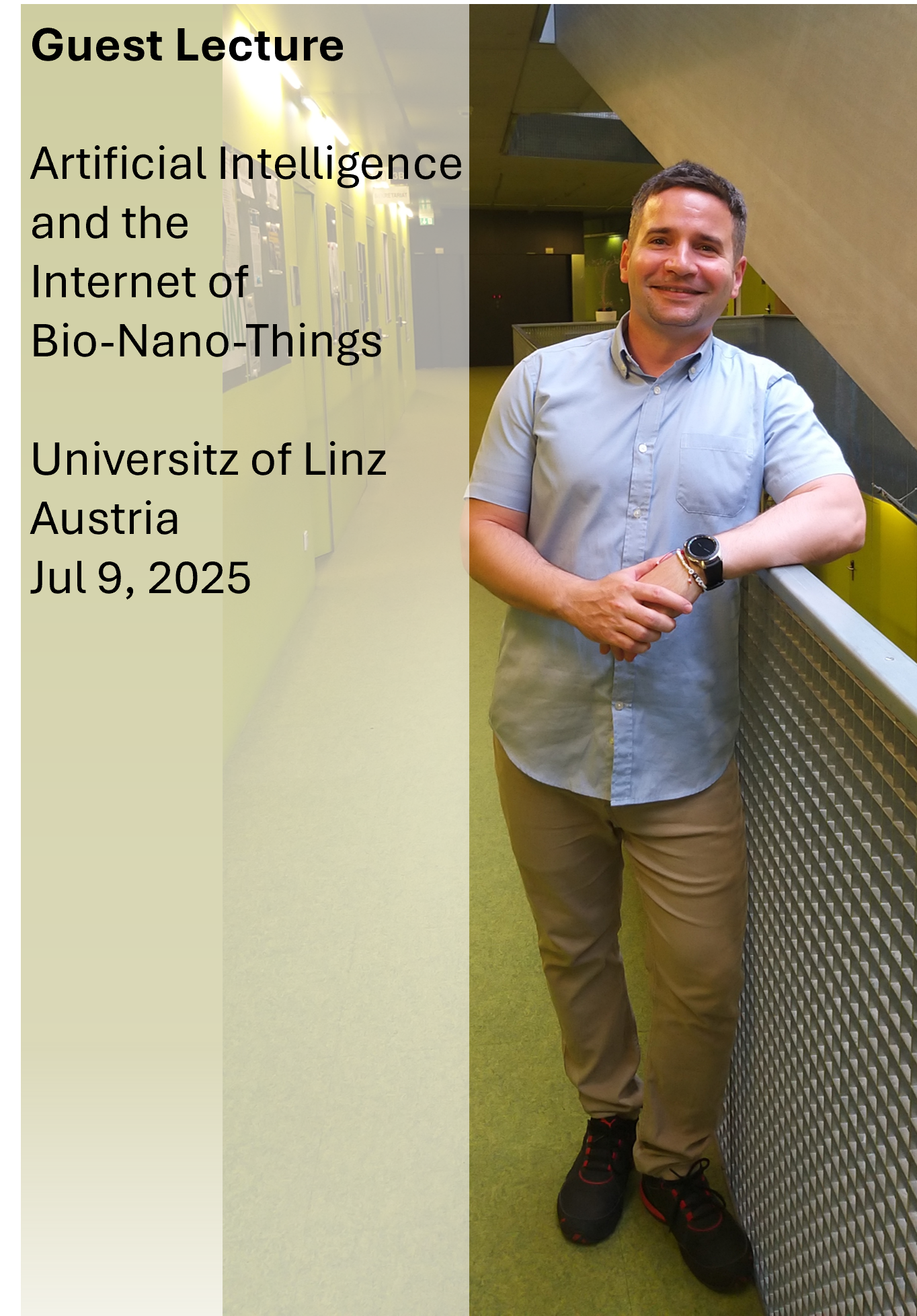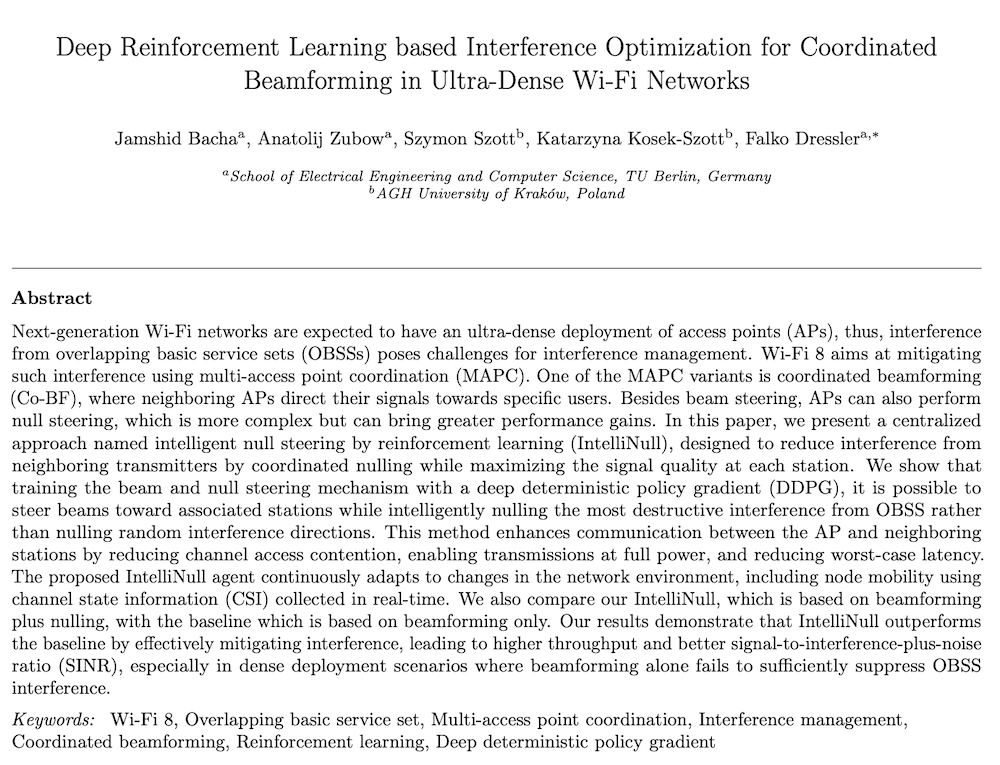Literature Database Entry
dressler2007selforg
Falko Dressler, Self-Organization in Sensor and Actor Networks, Chichester, United Kingdom, Wiley, 2007.

Abstract
Self-organization is a rather fascinating concept that enables systems consisting of huge numbers of autonomously acting subsystems to perform a collective task. Moreover, self- organizing systems show an overall behavior that cannot easily be predicted or even preprogrammed in a scalable way. It was in the early 1960ies that people like Ashby and Eigen investigated self-organization properties in (natural) systems. Since these days, a great number of (technical) solutions have been developed, which, either on purpose or unintentionally, inherently the basic concepts of self-organization. The aim of this book is to investigate the concepts of self-organization in the context of autonomous sensor and actor networks. The primary objective is to categorize the basic self-organization methods and to survey techniques for communication and coordination in massively distributed systems according to the developed classification scheme. Basically, two possible approaches can be thought of for organizing this book. First, we could start analyzing sensor and actor network technology and figure out what basic mechanisms are employed and how these relate to self-organization. A second approach would be to introduce self-organization as a methodology, apparently used everywhere in our life (in nature and in technical systems), and afterwards to continue with technical issues in sensor and actor networks searching for previously learned self-organization methods. I decided to follow the second approach in order to keep the focus on self-organization while studying the term in the world of sensor and actor networks. The term self-organization is still often misunderstood and misinterpreted. Therefore, this textbook is intended to be a basis for a better understanding of the concepts of self-organization, especially in the domain of sensor and actor networks. It provides a stepwise introduction of definitions, methodologies, and corresponding techniques relevant in the context of self-organization. Recent advances in miniaturization and wireless communication enabled the development of low-cost sensor nodes. Additionally, new application domains of sensor and actor networks emerged that demand for huge numbers of interacting devices. Thus, the relevance of self-organization methods is rapidly increasing as it is considered the primary control paradigm for distributed and massively distributed systems. The reader will see that self-organization has a number of advantages compared to other control paradigms. So, it becomes possible to operate huge numbers of collaborating subsystems even in case of limited resources, unreliable communication, and in case of massive failures of single systems. Unfortunately, these advantages are accompanied by some rather annoying side effects such as the increasing complexity and a nondeterministic behavior. By using optimal combinations of the basic methods of self-organization, these disadvantages can be minimized to some extent. According to the objective of this textbook - to study sensor and actor networks - the most relevant domains of communication and coordination are deeply investigated based on well-known algorithms and mechanisms and a number of case studies. This includes networking aspects of medium access control, ad hoc routing, data-centric communication, and clustering techniques. Additionally, control mechanisms for cooperation, task and resource allocation, and collaborative actuation are investigated. The book is concluded by a brief introduction of the domain of bio-inspired algorithms. This study is included for two reasons. First, to demystify the term bio-inspired networking, and secondly, to show the capabilities of such bio-inspired approaches.
Quick access
Further information ![]()
Original Version ![]() (at publishers web site)
(at publishers web site)
BibTeX ![]()
Contact
BibTeX reference
@book{dressler2007selforg,
author = {Dressler, Falko},
doi = {10.1002/9780470724460},
title = {{Self-Organization in Sensor and Actor Networks}},
isbn = {978-0-470-02820-9},
location = {Chichester, United Kingdom},
publisher = {Wiley},
year = {2007},
}
Copyright notice
Links to final or draft versions of papers are presented here to ensure timely dissemination of scholarly and technical work. Copyright and all rights therein are retained by authors or by other copyright holders. All persons copying this information are expected to adhere to the terms and constraints invoked by each author's copyright. In most cases, these works may not be reposted or distributed for commercial purposes without the explicit permission of the copyright holder.
The following applies to all papers listed above that have IEEE copyrights: Personal use of this material is permitted. However, permission to reprint/republish this material for advertising or promotional purposes or for creating new collective works for resale or redistribution to servers or lists, or to reuse any copyrighted component of this work in other works must be obtained from the IEEE.
The following applies to all papers listed above that are in submission to IEEE conference/workshop proceedings or journals: This work has been submitted to the IEEE for possible publication. Copyright may be transferred without notice, after which this version may no longer be accessible.
The following applies to all papers listed above that have ACM copyrights: ACM COPYRIGHT NOTICE. Permission to make digital or hard copies of part or all of this work for personal or classroom use is granted without fee provided that copies are not made or distributed for profit or commercial advantage and that copies bear this notice and the full citation on the first page. Copyrights for components of this work owned by others than ACM must be honored. Abstracting with credit is permitted. To copy otherwise, to republish, to post on servers, or to redistribute to lists, requires prior specific permission and/or a fee. Request permissions from Publications Dept., ACM, Inc., fax +1 (212) 869-0481, or permissions@acm.org.
The following applies to all SpringerLink papers listed above that have Springer Science+Business Media copyrights: The original publication is available at www.springerlink.com.
This page was automatically generated using BibDB and bib2web.







